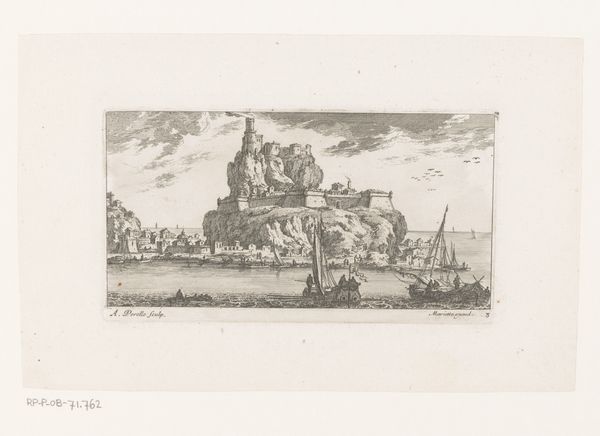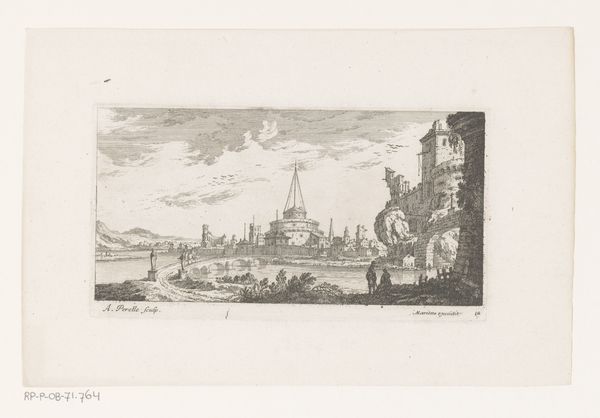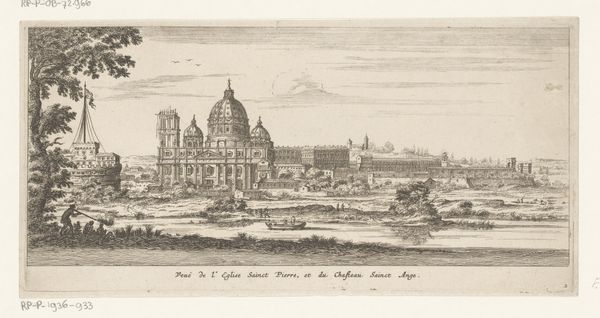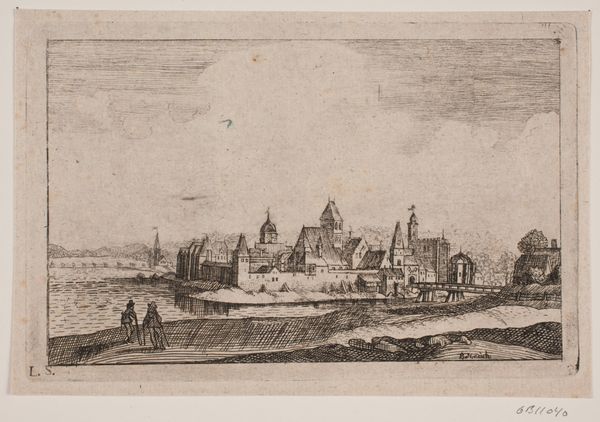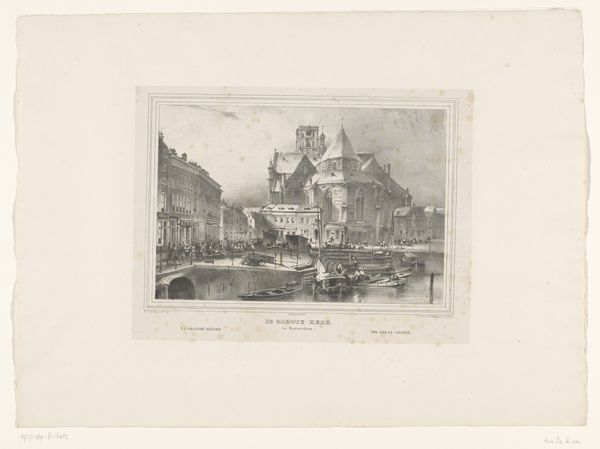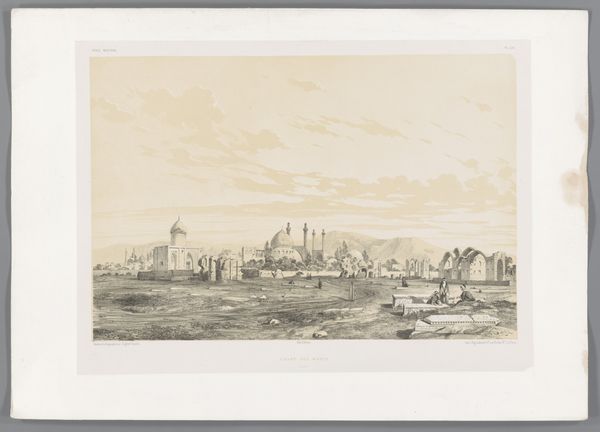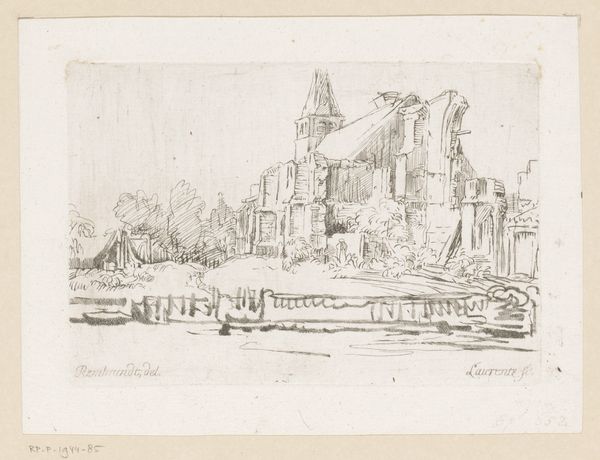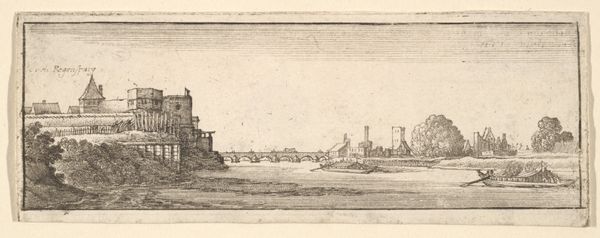
print, etching
#
baroque
# print
#
etching
#
old engraving style
#
landscape
#
cityscape
#
history-painting
Dimensions: height 58 mm, width 115 mm
Copyright: Rijks Museum: Open Domain
Editor: This etching, “Views of the Castel Sant’Angelo” by Israel Silvestre, probably created sometime between 1636 and 1661, gives me a sense of standing far off, gazing at a beautiful, somewhat distant past. It's like viewing Rome through a telescope pointed backward in time. What catches your eye in this print? Curator: Ah, telescopes to the past! I love that. For me, it’s the dance between precision and suggestion. Silvestre offers meticulous details of the Castel Sant'Angelo, but then melts the rest of Rome into this atmospheric haze. Isn't it funny how an artist chooses what to sharpen and what to blur? The bridge practically hums, doesn't it, echoing across the water, yet the dome is all dreamy distance. Editor: It does seem deliberate. Is that tension a common Baroque trick? Curator: A useful tactic, yes! It heightens the drama, focuses your eye, and whispers, "There's more to see than meets the immediate gaze." Think of it as the art of eloquent omission. What tales does this scene spin for you? Editor: I think about all the people who must have walked that bridge. Popes, emperors, artists… it's a walkway into history, still standing today! It almost makes me want to find out more about the artist. What do you think Silvestre wanted viewers to get out of this? Curator: Perhaps a quiet moment of reflection. The enduring nature of architecture against the ephemerality of human existence. I reckon, Silvestre gives us permission to linger, to let our thoughts ripple outwards like the water in the foreground, mingling our own story with the grand narrative of Rome. Editor: That’s beautiful! Now I look at this, it makes me want to write about its influence on modern cityscape art! Curator: There we have it—the eternal echo! Now I, too, want to explore his influence. Perhaps together?
Comments
No comments
Be the first to comment and join the conversation on the ultimate creative platform.
